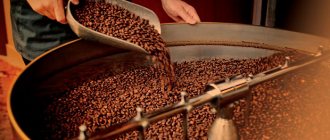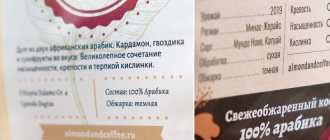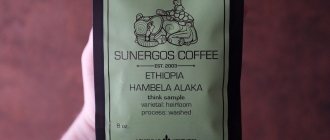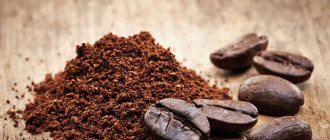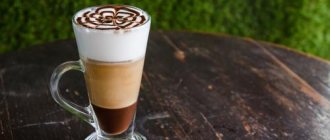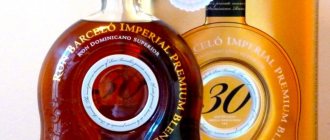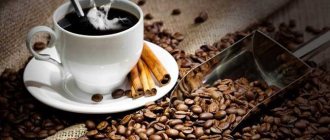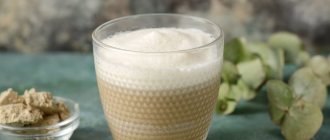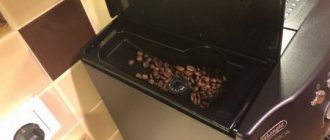07.08.2017
The degree of roasting of coffee is one of the most important factors that determine the taste. Before roasting, the coffee beans are soft, with a fresh herbaceous smell and almost no taste. The roasting process transforms raw beans into aromatic, flavor-filled, crunchy beans called “coffee.”
The most common way to determine the degree of roasting is by the color of the beans. The longer the roasting lasts, the darker the beans become. At high temperatures, oils appear on the surface of the grains. Because coffee beans vary depending on the variety and country of origin, color is not the most accurate indicator of roast level, but when combined with typical temperatures for the roasting process that produce the desired chocolate hue, color becomes a useful way to determine roast level.
Often, roasting preferences depend on where you live. For example, darker roasts are popular on the West Coast of the United States than on the East Coast. Europeans also like strong coffee, so there are French, Italian and Spanish dark roasts.
There are three most common roast types: light, medium and dark.
Story
The first evidence of coffee roasting came to us from the Ottoman Empire and dates back to the 15th century, when thin round sheets of metal or porcelain were used as utensils. They were equipped with a long handle so that it was convenient to hold the “frying pan” over a brazier with coals, periodically shaking and stirring the grains.
Around 1650, a cylindrical roaster was invented in Cairo that could roast large batches of coffee. Soon the innovation was adopted in France, Holland, Italy and other European countries.
Cylindrical roasters for roasting coffee beans
In the 19th century, many commercial roasters were patented for mass roasting of coffee. At the same time, lovers of the invigorating drink continued to roast the grains by hand on baking sheets and stoves. For such enthusiasts, a home spherical roaster appeared in Ohio in 1849. However, by the 1900s, it became much more profitable to buy pre-roasted coffee: thanks to developing technologies, it cost only slightly more than raw coffee.
Related article: how to choose a roaster for your home.
In 1903 and 1906, electric roasters were patented in the USA and Germany, respectively, the problem of smoke affecting the taste of the product was solved. In 1976, they learned to fry grains with hot air without the risk of burning them into embers. Nowadays, there are many devices for roasting coffee, ranging from banal metal meshes that must be placed over an open fire, to high-tech “smart” devices.
The boom of coffee shops in the 1970s made home roasting of coffee beans almost meaningless, turning it into the lot of fine connoisseurs - commercial roasters installed in coffee shops allow you to quickly and efficiently roast beans to any degree, you can program the roasting style, while the barista does not must stay vigilantly at the stove and stir the coffee so that the beans do not burn.
Traditional roasting method
Pan
Now about how to roast coffee beans at home. The traditional method uses a cast iron frying pan with a thick bottom.
The grains instantly absorb foreign odors. Therefore, clean the pan thoroughly and wipe dry.
Pre-rinse the coffee cherries under water and remove the husks. They fry better clean.
Additional accessories
The grains in the pan must be constantly stirred. Use a whisk or long-handled wooden spatula.
Pour 200-300 grams of grains into the frying pan. Larger quantities will not cook evenly.
Record the time on a stopwatch. The grains will burn if left too long.
Frying time
Pour the green berries into a hot frying pan and stir until they crackle.
Then they are fried for another 3-4 minutes.
Stir the grains constantly - they should not lie on one side for more than two seconds.
Do not lift the pan when stirring. Otherwise, the heating mode will be disrupted.
Coffee bean roasting technology
Raw coffee beans are green in color. In principle, you can eat them this way - for example, add them to a salad or infuse them with strong alcohol, but they won’t make coffee as a drink.
The industrial roasting process is divided into the following stages: sorting, roasting, cooling, packaging.
When roasting, coffee beans change color first to yellowish, then to brown, double in size (but lose weight due to evaporated water), and acquire a characteristic aroma. If everything is done correctly, tannins will decompose in the beans, the fruits will no longer be so tart and astringent, B vitamins will be retained in them, caffeine will be formed (this substance is responsible for the taste and aroma characteristics of coffee), and essential oils will be released.
Roasting temperature varies from 200 to 250 degrees Celsius. The grains must be roasted evenly, so they must be stirred constantly. A heat that is too low will not allow the flavor to fully develop, while a heat that is too high will burn the outer layer of the grain, leaving the core raw.
In industrial conditions, finished roasted coffee is cooled with air, or less often with water. Cooling is necessary because if you leave the beans to cool naturally, they will continue to roast “from the inside” due to the temperature already reached.
Industrial roaster
At approximately 196°C the beans begin to crackle, this sound (“first pop”) marks the beginning of the light roasting phase. At 224°C, a “second pop” occurs, meaning that the previously expanding grains began, on the contrary, to dry out.
In some countries, a bit of local flavor is added to the classic process. For example, in Vietnam, raw coffee beans are brushed with butter and sprinkled with sugar, so that by the end of roasting they are caramelized.
After the First Pop, the grains acquire a roasted aroma. After the Second Cotton, essential oils begin to be released.
How to Roast Coffee Beans
Before you start preparing the beans, keep in mind that the longer you heat them, the richer the aftertaste will be.
Roasting coffee at home is easy, but before you start, think about the technique.
Let's consider popular options for preparing raw materials for an invigorating drink.
On a frying pan
This is a classic method with a large number of fans. Such preparation will not take much time.
- It is recommended to roast coffee in a cast iron frying pan. It has a thick bottom, so heating will occur evenly. It is important to clean the container thoroughly first. It should not smell of anything - third-party odors will mix with the aroma of Arabica, this will ruin the taste of the drink. Also thoroughly clean the wooden spatula with which you will stir the fruit.
- It would be useful to prepare the surface on which the raw materials will be cooled. At home, it is better to use a metal baking tray.
- The beans should be thoroughly washed under running water. This is required to remove any husks that may interfere with frying. Washing is also necessary to get rid of dust that can clog the mill.
- Wait for the grains to dry.
- Open all the windows in the house and turn on the hood. This is necessary to prevent the rich coffee smell from spreading throughout the house. It will be difficult to weather it.
- Heat a frying pan and pour the beans into it. In the first 2 minutes, the room where the roasting process takes place will be very smoky.
- Fry the grains until required. Stir them constantly. The minimum simmering time is 4 minutes.
- Remove container from heat. Place the beans on a baking sheet and place them in a cool place to cool.
Hairdryer
The device that women use to style and dry their hair is not suitable for roasting coffee. You need to take a hair dryer.
This technique is recommended for use when preparing Robusta beans. Instructions:
- Take an enamel pan with a thick bottom. It must be perfectly clean.
- Place a colander or sieve on top of it. Add beans.
- First, they are fried with a hairdryer turned on at medium power. Heat the grains well, stirring them constantly.
- The minimum processing time is 2 minutes.
- Then switch the device to maximum power. As you stir vigorously, you will see the husks fly off the beans. Gradually they will darken.
- The average roasting time is 8-10 minutes.
- After turning off the hair dryer, stir the raw material for about 1 minute.
In the oven
This is a very simple way to prepare raw materials for brewing an invigorating drink. To roast green coffee in the oven, you need to preheat it to 250 degrees.
Coffee roast levels
Weak (~ up to 205 °C). Dry grains are light brown in color with a sour taste without roasted notes; the individual characteristics of the variety are perfectly felt. Caffeine content 1.37%.
Medium (~ up to 219 °C). Dark brown grains, dry, sweet and sour taste, rich aroma. The drink is full-bodied, the acidity is muted. Caffeine content 1.31%.
Strong (~ up to 230 °C). Dark brown grains, with an oily film, almost no sourness, with a bitter-sweet taste, rich roasted aroma. The individual characteristics of the variety are almost not preserved. Caffeine content 1.31%.
Maximum (highest) (~ up to 245 °C). The color of the grains is black-brown, the taste is bitter, with a “smoke”.
Also, degrees of roasting are divided into “light” and “dark” (based on the color of the grain).
The importance of the roasting process
Green coffee only lasts for a few months. The faster the coffee beans are roasted, the better their quality will be.
The harmony of taste of coffee beans is revealed only after good heating, which has a scientific basis. The fact is that under the influence of high temperatures, a chemical process occurs in the grain - pyrolysis. It is interesting that it has not been fully studied, and what kind of transformations take place in the depths of coffee is a mystery. One thing is clear: some chemical compounds disappear, and others form in their place.
Fact: The brown color of coffee comes from the caramelization of sugar in the beans. The transformation of white sugar into golden lollipop by heating sweet granules is well known. The longer the coffee beans are roasted, the more intense the brown color and the more tart the taste of the drink.
The roasting process is very complex and requires high professionalism from the person involved. This is a whole art! Each specific batch of raw coffee requires an individual approach to processing, which will reveal the advantages and disguise the shortcomings of the coffee product.
Types of coffee roasting
It is important to remember that the final taste and aroma properties of coffee are influenced by other factors besides roasting: the type and age of the beans, the region of their cultivation, storage method, etc.
During the roasting process, the chlorogenic acid contained in coffee decomposes into quinic and caffeic acid, and bitter chlorogenic acid lactones are simultaneously formed. During intense roasting, lactones decompose, resulting in the quintessence of bitterness - phenylindanes. Therefore, the more the coffee is roasted, the more intense the bitterness.
| Roasting degree | Temperature | Appearance of grains | Taste and aroma |
| Cinnamon Roast | +195 °C | Dry, light brown | Delicate, with the aroma of freshly baked bread and pronounced sourness |
| New England Roast, Light | +205 °C | Dry, slightly darker than in the previous case | There is still sourness, but without bread notes |
| American Roast | +210 °C | Dry, rich light brown color | Sourness combines with delicate bittersweet notes |
| City Roast | +220 °C | Dry, rich brown color | Bittersweet notes are felt more clearly, the sourness weakens. This roast is good for coffee tastings |
| Full City Roast | +225 °C | Rich brown color, with the first drops of oil on the surface | Shades of chocolate and caramel appear in the taste |
| Vienna Roast | +230 °C | Surface oily, color dark brown | The sourness disappears, the caramel tones become more intense |
| French Roast | +240 °C | Color – dark brown, more oil on the surface | Burnt tones are woven into caramel shades, and astringency appears. This roast is considered optimal for making espresso. |
| Italian Roast | +245 °C | The color is getting darker, there is more oil | The bitterness is felt more and more clearly. Roast suitable for espresso |
| Spanish Roast | +250 °C | Brown-black color, oily surface | Sharp bitter taste with notes of burnt coffee. Not all varieties can withstand this degree of roasting: some grains simply become charred. |
Roast markings from coffee producers
Each coffee manufacturer has its own roasting scale. Some simply indicate intensity with numbers from 1 to 5:
- 1 – Cinnamon (Light);
- 2 – American or Urban (Medium);
- 3 – Full city or Viennese (Medium-dark);
- 4 – Italian (Dark);
- 5 – French or Spanish (Very dark).
Other manufacturers distinguish 3 degrees:
- weak (usually corresponds to American or Urban);
- middle (Viennese);
- strong (French or Italian).
Why do you need to roast coffee?
Raw coffee beans are dense green seeds consisting of approximately half carbohydrates in various forms and half a mixture of water, proteins, lipids, acids and alkaloids. Green coffee tastes and smells most like peas and is just as hard in texture.
It is not recommended to drink green coffee in its pure form, and those who say that you can lose weight with it are very mistaken; you can literally get “adventures on your ass”, but it is unlikely to lose weight. Therefore, green grain must be subjected to heat treatment in order to change the structure of the grain and its biochemistry during the roasting process.
Roasting coffee at home
At home, coffee can be roasted in a frying pan/grill, in an oven, in a popcorn machine, or in a special roaster. The first two methods are the cheapest and simplest, the latter are the most effective. In theory, even a microwave oven will do. In practice, this method has not proven itself to be the best, since the grains are roasted poorly and unevenly.
Methods:
- Frying pan or grill. Pros: fast, convenient, cheap. Cons: It is difficult to maintain an accurate temperature if roasting over an open fire - the smoke affects the taste of the grain.
- Oven. Pros: cheap. Cons: slow, difficult to achieve uniform roasting of coffee beans.
- Popcorn machine. Pros: simple, the beans are mixed automatically, it’s easy to achieve uniform roasting. Cons: not intended for roasting coffee (if it breaks, the warranty will not be valid), high price.
- Roaster. Pros: designed for roasting coffee, easy to use. Cons: expensive.
After the first pop, beans for weak light coffee are obtained. After the second – medium-roasted grains. If you want a deep roast, wait 30 seconds after the second pop.
Immediately after roasting, you need to cool the beans - this can be done by pouring the coffee into a colander and directing a stream of cold air at it.
The pan must be completely dry and clean
When coffee is roasted, carbon dioxide is released, a process that continues even after the beans have been removed from the heat. Therefore, freshly roasted beans should be allowed to sit for about 12 hours, and only then poured into a container or sent for grinding.
If too much gas accumulates in the coffee, the lid of the container may be knocked off, and the gas will negatively affect the taste of the drink. To fully “mature”, gain taste, body and aroma, the grains need about 24 hours. On the other hand, you shouldn’t forget about roasted grains for longer than a week either - the taste will become musty and stale.
Why is it called "French Roast"?
The history of coffee is fascinating. How the drink came to Europe is a story that no one gets tired of hearing. Once this was established in Europe, each country began to roast the bean to suit the taste of its countrymen or customers, as is the case today.
By the end of the 19th century, followers soon emerged in different countries or regions, using their own roasting characteristics. Therefore, in France there is “French” roasting, in Italy “Italian” roasting, in Spain “Spanish” roasting, the list goes on.
Are all dark roasts the same?
No! There are a varying number of shades of dark roast, and each has its own name. The key factor that determines what type of roast it is depends on the "internal temperature of the beans" during roasting. This is different from the "air temperature" inside the fryer.
Popular dark roasts have a relatively narrow temperature range. For example, Full City+ reaches 225°C (about 437°F) to Italian Roast at 245°C (473°F). Within this range you have at least 4 different types. They range from dark brown, where the oils are visible, to almost black and oily. The Spanish roast is completely black and shiny.
What is the difference between Full City+ and Light French Roast? Probably nothing. The same can be said with French roast and Italian roast.
The degree of roasting of coffee and its effect on taste and strength
